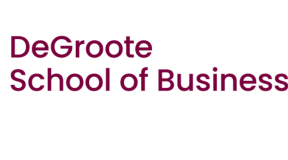Exploring generative AI at McMaster
McMaster University established an Artificial Intelligence Advisory Committee in March 2024 to provide strategic guidance on the university’s AI initiatives, with a particular focus on generative AI. The committee aims to adopt a comprehensive approach that encompasses academic, research, and operational aspects. Visitors are encouraged to check the page for the latest news, events, resources, and updates related to generative AI at McMaster University.
McMaster AI T&L task force
McMasterUniversity has established a task force to explore the use of generative Artificial Intelligence (AI) in teaching and learning.
The Task Force on Generative AI in Teaching and Learning, co-chaired by Kim Dej and Matheus Grasselli, aims to assess the potential benefits and challenges of incorporating generative AI tools like ChatGPT into educational practices. The task force will engage faculty, staff, and students in the exploration process and submit recommendations to the provost by September.
The university recognizes the need to incorporate technology into pedagogy to prepare students for the future of work and aims to provide guidance to instructors and students regarding the use of generative AI while ensuring academic integrity. McMaster’s MacPherson Institute is already fielding inquiries from faculty members seeking support in integrating generative AI into assignments, and the task force will consider input from various stakeholders as part of its examination. Clear guidelines on the appropriate use of AI and discussions around ethical considerations and privacy protection are important areas to address in this evolving field.
Read the article
Generative AI citing guide

A digital citation guide from the McMaster University Library is helping students, instructors, and researchers navigate how to cite generative artificial intelligence (AI) content.
Developed by McMaster librarians Ines Perkovic and Sarah Cairns, the free resource is designed to complement the provisional guidelines released by McMaster’s Task Force on Generative AI in Teaching and Learning. These guidelines, introduced over the summer, provide instructors with a foundational understanding of how generative AI can be used in academic settings.
How AI could save (not destroy) education
Digital learning strategy

The Digital Learning Strategic Framework was developed to address the need for a centralized philosophy for digital learning at McMaster.
More than 850 educators and learners were engaged in shaping the framework, which provides a coordinated approach to online tools and technologies. This website is a comprehensive resource of links and information on McMaster’s Strategic Framework.
U of T ChatGPT Q&A

The University of Toronto acknowledges the significant impact of the latest generation of Artificial Intelligence (AI) systems on teaching and learning. They are committed to providing transformative learning experiences and supporting instructors in adapting their pedagogy to this emerging technology. Among the various generative AI tools available, ChatGPT is highlighted as a prominent system that uses predictive technology to generate and revise written content across different domains.
The university has created sample statements for instructors to include in course syllabi and assignments, clarifying the guidelines for AI technology usage. The FAQ section addresses inquiries related to testing ChatGPT, its accuracy, ethical considerations, pedagogical use, academic integrity, detection methods, and citation guidelines. The university is dedicated to providing institutional-level guidance on this matter.

AACSB ChatGPT using in business schools
his article explores the impact of generative AI—specifically ChatGPT—on business education. While it acknowledges educators’ concerns, it emphasizes the opportunities AI presents and encourages business schools to adapt their teaching methods.
Key limitations of ChatGPT are outlined, including its lack of critical thinking, emotional understanding, and potential for biased or inaccurate responses. The article highlights the importance of training students to use AI tools thoughtfully and critically while developing distinctly human skills like creativity, intuition, and communication.
It concludes with a call for collaboration between business schools and industry to shape how generative AI is integrated into education and to design curricula that keep pace with technological change.
Harvard Business School Publishing on AI

How ChatGPT and other AI tools can maximize the learning

Let ChatGPT be your teaching assistant
Large language models (LLMs) like ChatGPT have shown considerable promise in helping teachers improve classroom outcomes and reduce workload.

Why all our classes suddenly became AI classes
Interesting reads on AI
ChatGPT in academia
Now, academia faces the emergence of artificial intelligence text generators (AITGs) like ChatGPT, which can generate articles, essays, and code.
The education sector has been divided over the use of technology in classrooms, but the COVID-19 pandemic compelled institutions to embrace technology and educate students on responsible use. Now, academia faces the emergence of artificial intelligence text generators (AITGs) like ChatGPT, which can generate articles, essays, and code.
The potential of AITGs in education includes boosting familiarity with AI, assisting educators in session preparation, saving time through automated grading and feedback, aiding in language skills development, and improving engagement in online learning. However, concerns about plagiarism, bias, overreliance, and unfair evaluation have been raised.
Academia can choose to adapt by raising awareness, training students in AI use, developing critical thinking skills, emphasizing in-class activities, and promoting ethical practices. Some educators resist AITGs by asking complex questions, seeking personal information, blocking access, or exploring AI detectors. It is important to view ChatGPT as a complement to traditional teaching methods, and educators must creatively adapt their content and skills while embracing the potential benefits of AITGs.
ChatGPT and the future of business education
Concerns about AI plagiarism and the need for critical thinking when using ChatGPT have emerged. It is viewed as a complement to traditional teaching methods rather than a substitute.
ChatGPT, developed by OpenAI, has garnered both admiration and alarm for its ability to generate content across various domains. Business schools have explored the potential and limitations of ChatGPT in research and learning.
Some professors find it useful as a copy editor, translator, and sparring partner for writing tasks. However, its reliability and knowledge base are suspect, and it often produces incorrect or nonsensical answers. While it can assist with coding tasks and provide alternative perspectives, it falls short in areas that require conceptual understanding, coherence, and originality.
Concerns about AI plagiarism and the need for critical thinking when using ChatGPT have emerged. It is viewed as a complement to traditional teaching methods rather than a substitute. The future may involve leveraging AI’s capabilities to generate questions, assess answers, and enhance creativity in education.
Ultimately, there are debates about the potential impact of advanced versions of ChatGPT and algorithmic journals, which could revolutionize academic research and eliminate the need for human authors and engineers.


